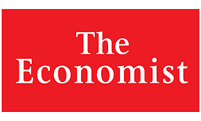Report: The Future of Healthcare
Sector: Healthcare
Publication Date: 2020
Michael Schmelmer, Chief Finance Officer at Boehringer Ingelheim
Michael Schmelmer, CFO at Boehringer Ingelheim outlines his firm’s efforts to excel in pharma’s digital future and the abundant opportunities that lie therein.
Few Big Pharma companies have been as quick off the mark to usher in digital technologies as Boehringer Ingelheim. What makes you different?
We are not afraid of being disrupted by the big data firms or tech giants. On the contrary, we consider ourselves champions of digitalisation and a disruptor for our industry segment in the positive sense of the term. This is because we profoundly believe that digitalisation offers us the potential to improve upon, and in some instances fundamentally transform, not only the innovation process, but the entire pharmaceutical value chain.
We are increasingly harnessing digital tools to push our boundaries and shorten our development cycles. In some cases the effect is evolutionary: artificial intelligence and machine learning, for example, are enabling us to register and evaluate patient data in studies quicker than before. In other ways it is revolutionary: by thoroughly overhauling the manner in which we can interact with physicians and patients. These are intensely exciting times because completely new business models and approaches are becoming possible that can deliver considerable benefits for the industry, patients, payers and practitioners alike.
For example we have created a digital assistant called BRASS – standing for ‘Benefit Risk Assessment System’ – that runs off AI and has become a valuable decision-making tool for clinicians performing pharmacovigilance. The experts can enter their own experiences and assessments as well as background information into the application, which can then deploy various analytical methods to independently suggest new findings as well as place data in the context of biomedical expertise.
Can you give us some specific examples of exciting digitally-backed innovations from Boehringer Ingelheim that have had a clearly transformative impact on health outcomes?
Certainly. Boehringer Ingelheim has developed an AI-backed auscultation aid that heralds a real game changer in diagnosing rare pulmonary diseases, such as idiopathic pulmonary fibrosis (IPF). Using a traditional stethoscope, most general physicians would be unable to identify IPF and instead be likely to misdiagnose the abnormal sounds that they hear as cardiac problems or asthma. Even with a pulmonologist the probability of correct first-time identification would be mixed, which is why it takes on average 17 months to confirm a diagnosis of IPF after the onset of the initial symptoms. This constitutes an eternity for patients and a terribly unfortunate loss of time since this is a serious disease that is often terminal.
Essentially our solution to this very practical problem has been to upgrade the classic stethoscope with a digital interface that is linked via a mobile phone to a cloud-based sound database. Using algorithms, a patient’s lung sound recordings are then compared with reference data from an extensive sound database. This database was created from recorded and confirmed diagnoses of lung diseases, collected in large clinical studies. The auscultation aid immediately sends the physician a result in the form of a ‘probability score’ for a certain lung disease. If this score is higher than a pre-specified threshold value, the tool will provide suggestions to the examining physician for additional diagnostic steps, examinations and procedures. As you can see this is a fairly simple fix that yields a big outcome. AI is being used to inform and help the physician, not to replace him. Ultimate decision-making always lies with the practitioner.
Another very real example would be the deployment of self-learning software, developed in conjunction with our partner Brainomix, that assists doctors to rapidly interpret CT scans to assess the nature and extent of brain damage post stroke, when nerve cells are rapidly deteriorating and every second counts. Physicians frequently take too long to decide, often because they need to obtain a second opinion from colleagues, but this mechanism means that timeframe can be thankfully condensed.
We understand you were personally responsible for the setting up, in late 2017, of Boehringer Ingelheim’s start-up-style digital lab, ‘BI X,’ which has been at the forefront of the company’s on-going efforts to embrace the digital revolution sweeping pharma. Can you please tell us a little bit about this entity, its purpose and cultural ethos?
Absolutely. BI X has been at the vanguard of our determination to ride the digital health wave and was established essentially as a production house and ecosystem pooling all the necessary skill sets to be able to jumpstart great ideas and roll out minimum viable products (MVPs) and pilot studies. ‘Agility,’ ‘speed’ and ‘easy access’ are central to how BI X operates. We use scrum team frameworks and deploy a system of three-month sprints, whereby we test out new ideas in quick runs before reviewing the results and making swift ‘go’ or ‘no-go’ decisions.
When a team comes up with creative idea that they judge to be ripe for experimentation, they are handed roughly five minutes to present to the digital steering committee, and the digital board takes a few minutes to ask questions and decide whether or not to allocate resources. Projects at this stage are not presented with any formal business plan or projection. After a brief period of around three months, a project that has been given the green light has to report back and a resolution is made as to whether the initiative should be aborted or scaled up. Until that point, there is no need to have business case and the project is funded purely out of BI X. Projects judged successful enough to continue then exit BI X and are transferred over to other parts of the company to be accelerated and scaled.
Some highly promising initiatives have originated precisely in this fashion. One technician had the idea that it may be possible to detect Alzheimer’s by creating a pathologic speech-processing programme. Though it was not really core to Boehringer Ingelheim’s main thrust of business, we considered this to be an interesting potential pathway that merited further investigation. The end outcomes of this intelligent speech recognition software were so compelling that we are now harnessing the same sort of methodologies to support early diagnosis of Schizophrenia. Studies of schizophrenia patients have shown that the illness is reflected in their speech patterns, and a change in intonation and a decrease in the level of complexity in their speech may be early signs of disease onset, so it makes a lot of sense to expand out and apply the techniques to this particular area of neuroscience as well.
How easy has it been to inculcate the ‘tech spirit’ into a 130+ year-old, iconic company like Boehringer Ingelheim and to recreate Silicon Valley-esque practices in the Rhineland?
We have certainly been keen to capture a fragment of the ‘move fast and break things’ ethos of Facebook, Apple, Google or Amazon. The incursion of the tech giants into the healthcare arena is importing a rather different work style. Software developers often approach issues from a very different start point compared to drug developers. Tech companies scope in upon unique customer issues that they try to speedily resolve with creative fixes. They have adopted an entire philosophy and methodology around the concept of the ‘minimum viable product.’ Traditional pharma firms, by contrast, tend to try to gold-plate solutions, often addressing problems out there that the customer doesn’t even know exist.
Right from the start, we wanted to develop an ecosystem whereby these two worlds could collide and benefit from a cross-pollination of ideas, and that is precisely why we elected to situate BI X within our campus in Ingelheim rather than basing it out of familiar start-up hubs like San Francisco, Shanghai or even Germany’s entrepreneurial melting pot, Berlin. On the one hand, we wanted the data scientists, software engineers and scrum masters within BI X to have ready access to our cutting edge medical science and drug making operations. On the other hand we wanted the rest of our organisation to gain exposure to design thinking and alternative ways of working that are agile and without hierarchies.
I’ve always made a point of trying to de-mystify BI X. When other employees ask me what they do in the digital lab, I encourage them to take a stroll over to the complex and see for themselves. Much hinges upon these two worlds being able to interact, learn from each other, speak a common language and form effective teams.
As drug development becomes increasingly multi-disciplinary in the sense of needing to fuse competencies in medical science with mastery of big data processing, machine learning and algorithmic design, how have you been going about the task of recruiting the requisite talent?
The need for data scientists has never been greater, and it is true that the skill sets required to carry out latest generation drug discovery are evolving. Human resourcing has become a major issue for drug developers. Pharma companies are competing amongst themselves to secure the best talent. Possession of the technology alone only gets you so far. The critical differentiating factor is about bringing in the right mind set and transformational approach.
What I will say, however, is that we enjoy one big advantage vis-à-vis big technology giants like Google when it comes to sourcing human capital. The clear purpose of a pharma company is to improve the lives of people and to make the world healthier. In an era when there is so much controversy around data privacy and the societal effects of social media, companies like Facebook are very much on the defensive when trying to explain their raison d’être and purpose. Many budding entrepreneurs have a strong social conscience, and the allure of tangibly being able to make a difference in improving lives tends to be very appealing to them.
Boehringer Ingelheim ranks as the second largest animal health business in the world, habitually allocates 9% of annual sales to animal health R&D and is well recognised for pioneering advanced disease prevention in this space. Just how ready is this segment for digital disruption?
Digital technology can be of immense advantage to the animal health sector, and we firmly believe that this space must not be overlooked. Already we have some fascinating programmes underway. For example, Boehringer Ingelheim has been collaborating closely with Belgian start-up, SoundTalks, to develop an audio monitoring system for the early detection of respiratory diseases that is currently being tested in livestock farming to monitor the coughing sounds of pigs which is an early indicator of serious illness. An algorithm filters the coughing, datasets are produced and linked to findings from diagnostic samples. High frequency of coughing is depicted and, as soon as a critical threshold is triggered, the programme alerts the relevant vet and farmers. In turn, early treatment of a few animals can prevent further infections of the whole herd, bringing down the use of medicines such as antibiotics.
We also have an exciting project in play called PetProConnect™ which radically redraws the relationship between pet owners and vets by enabling them to interact over smartphones to share pictures and the pet’s medical records as well as to initiate "face-to-face" consultations so that the vet can visually evaluate the pet from a remote location. This can be of great benefit to busy pet owners who, rather than skipping an appointment entirely, can secure the vet's input on issues such as a healing incision or minor rash. Of course, controls are also in place to ensure that the clinician retains control of judgment calls such as when telemedicine can substitute for an actual clinic visit. In this sense, we are going beyond just the pill in animal health and assuming a very proactive role in facilitating enhanced interactions between different stakeholders.

 Related Content
Related Content
A Netflix Model for Healthcare
Kris Sterkens says the healthcare system needs to transition from treating disease to preventing illness and could well adopt a Netflix model whereby payers take out a subscription and spread their payments for costly therapies over a number of years.
The Digi-Med Revolution is Here
Proteus Medical Health has invented the world’s first digital pill, with a view to surmounting the problem of patients failing to take medicines as prescribed. Andrew Thompson explains how the collection, analysis and application of data will be central to the new health economy.
Unleashing the Power of Artificial Intelligence
Mark O'Herlihy explains how and why machine learning will be fundamental to the healthcare of tomorrow, admitting that there is still a great deal of work to be done to demystify the role of new technologies by identifying proven results and best practice.
Champions of Protein Production
“We are years ahead of any competitor that may appear in the future,” says Claudia Jimenez, General Manager of biotech company ALGENEX, which uses moths to develop vaccines.
Report Sponsors




























